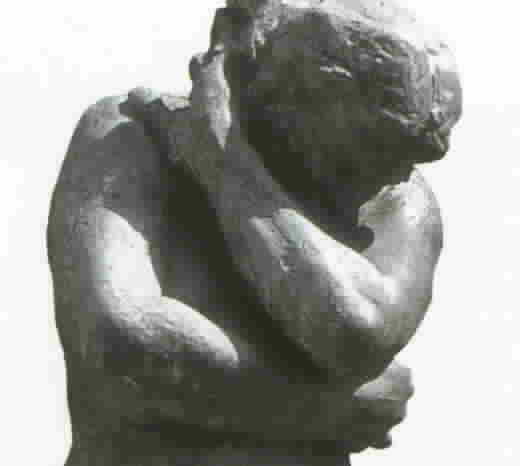
FLEXION WITHDRAWAL

Reflexive body movement. An automatic escape motion designed to remove a body part or parts from danger (e.g., flexing the neck to lower and protect the head).
Usage: Flexion withdrawal underlies many negative and submissive nonverbal signs (e.g., cues of disagreement, disliking, and fear; see BODY-BEND, BOW, CROUCH, GAZE-DOWN, HEAD-TILT-SIDE, and SHOULDER-SHRUG).
Business. Around a conference table, colleagues may reveal unvoiced negative feelings in postures influenced by flexion withdrawal, e.g., pulling the hands and arms backward, away from disliked speakers.
Biology. In mammals, the most primitive protective response is a flexion withdrawal, which "takes the head and neck away from the stimulus" (Salzen 1979:130).
Embryology. The crouch posture is "a protective pattern characteristic of the early embryonic flexion response" (Salzen 1979:136). By eight weeks, e.g., the human fetus already "knows" to withdraw its head and neck when its mouth is touched. Defensive, coordinated flexing and withdrawing movements have been seen in immature fish larvae, in marine snails, and in human embryos at eight weeks of age. ln four-legged animals whose brains have been surgically disconnected from their spinal cords, almost any tactile stimulus will cause flexor muscles to contract and withdraw a limb from whatever touched it (Guyton 1996).
Anatomy. Human arms and legs have highly developed flexor reflexes. Automatic escape movements, coordinated by the spinal cord, can be triggered, e.g., by scalding pot handles--or by strong emotions from the amygdala. Visceral pain may trigger withdrawal reflexes in muscle groups of the chest and abdomen (Willis 1998E).
Neuro-notes I. 1. Jumping to sound involves body-flexion
movements configured in paleocircuits of our amphibian
brain. Through their nerve fibers, auditory-lobe impulses reach
down to excite spinal networks of interneurons and motor neurons
in charge of muscles that flex our shoulders and arms,
and bow our heads into the protective crouch posture. 2. "The
most powerful flexion response is the flexor withdrawal reflex. This takes
precedence over other reflexes, including those associated with locomotion,
presumably because flexor withdrawal protects the limb from further damage"
(Willis 1998E:195).
Neuro-notes II."Another well-described spinal reflex arc is the flexion reflex afferent (FRA) pathway activated by relatively high-threshold fibers (e.g., associated with cutaneous nociceptor A or C fibers, group II, III, and IV muscle afferent fibers, etc.). Ipsilaterally, it involves at least two interneurons (three or more synapses) in several segments of the spinal cord and alpha-motoneurons of several flexor muscles. It is also called the nocifensive reflex or withdrawal reflex pathway. Specifically, it comprises at least two excitatory interneurons (three synapses) for ipsilateral flexor motoneuron activation and two interneurons (one excitatory and one inhibitory) for ipsilateral extensor motoneuron inhibition. If the stimulus is particularly strong and intense, it may be accompanied by an activation of contralateral pathways and, thus, lead to the crossed-extension reflex producing concomitantly an extension of the contralateral limb or leg. Additional interneurons (and decussation) are involved in mediating the crossed-extension reflex – two excitatory interneurons for contralateral extensor motoneuron activation and two interneurons (one inhibitory and one excitatory) for contralateral flexor muscle inhibition. These reflex pathways are thought to play a role in withdrawal of a limb (unilateral flexion and contralateral extension) from a painful stimulus whereas the crossed-extension reflex would serve to enhance postural support during withdrawal of the affected limb from the painful stimulus"(https://www.frontiersin.org/articles/10.3389/fneur.2012.00183/full).
See also NONVERBAL
RELEASE.
Copyright 1998 - 2021 (David B.
Givens/Center for Nonverbal Studies)
Detail of photo of a sculpture (sculpture and picture credit: unknown)